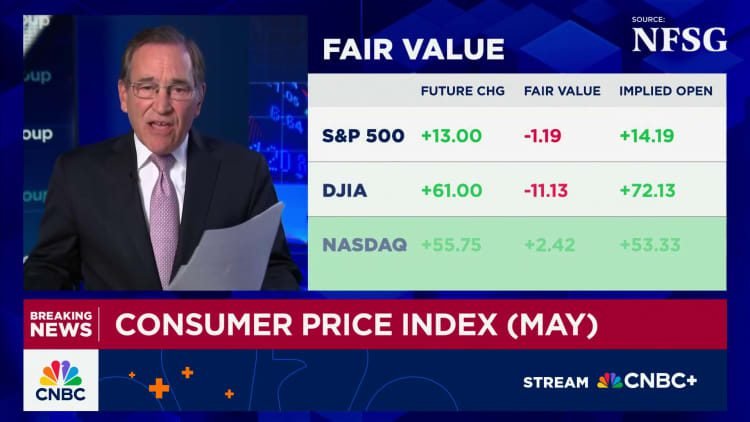Analyzing Recent Trends in U.S. Inflation
The U.S. economy has witnessed a slight rise in inflation rates recently, driven primarily by increases in grocery prices, even though fuel costs have decreased. This fluctuation raises concerns among economists regarding future price stability, particularly in light of ongoing tariff policies.
Inflation Rate Overview
According to the latest data released by the Bureau of Labor Statistics, the consumer price index (CPI)—a standard measure of inflation—rose by 2.4% over the past year, a slight increase from 2.3% in April. This suggests a gradual upward trend in inflation that could be influenced by various economic factors.
Economists note that this rise could be attributed in part to "base effects," a scenario where the inflation rates from the previous year were unusually low, thus making current figures appear elevated. Monthly data, however, offers a somewhat encouraging perspective, with a modest 0.1% increase in CPI from April to May, down from 0.2% the month before.
Anticipated Effects of Tariff Policies
Despite the relatively stable inflation figures, experts warn that the tariffs imposed by the current administration may impact consumer prices as the year progresses. There is a prevailing sentiment that what might appear as calm in inflation could soon lead to turbulence caused by rising costs from tariffs. Expert Mark Zandi emphasizes this point, predicting that the looming effects of tariffs might soon disrupt the current trend of disinflation.
Energy Prices Influence
A notable consequence of current market dynamics is the effect of tariffs on energy prices. In May, gasoline prices dropped by nearly 3% compared to April and showed a significant reduction of 12% from the previous year. This decline has largely been attributed to decreasing oil prices, which are influenced by growing concerns regarding a potential slowdown in global economic activity due to tariffs.
The drop in gasoline prices has positive ramifications, leading to lower costs for consumers and possibly reducing transportation expenses across various categories, including airline fares, which also saw a decrease of approximately 3% from April to May.
Grocery Prices and Consumer Sentiment
While energy costs may have decreased, grocery prices have emerged as a point of concern. In May, the inflation for food items increased by 0.3%, contrasting with a minor decline of 0.4% in April. This uptick in grocery prices has sparked unease among economists, who view it as an area that might present challenges as consumer habits evolve in response to price changes.
Factors Supporting Disinflation
In addition to energy price trends, other elements are contributing to a slowdown in overall inflation. A recovery in supply chains, paired with a cooling labor market, has played a significant role in stabilizing prices. Consumer spending remains a crucial factor, with data indicating that Americans have not significantly hesitated in adapting to rising prices thus far.
Housing costs, as a significant component of the CPI, have also moderated recently. Monthly inflation for both rent and the estimated rent value for homeowners has returned to levels that resemble those prior to the pandemic, indicating a positive trend in housing-related expenses.
Risks Associated with Tariffs
Despite emerging signs of stability in inflation, the ongoing tariffs present a risk to these trends. Economists highlight that tariffs could stall the favorable disinflationary path currently observed. The effective tariff rate hit approximately 6% as of April, which could soon escalate, potentially leading to increased costs for consumers.
Research from the Yale Budget Lab forecasts that the average American household may incur an added financial burden of about $2,500 by 2025 due to existing tariff policies. Early indicators of tariff impacts were evident in the May CPI report, particularly noticeable in categories such as major appliances and toys, where prices surged significantly.
Conclusion
In summary, while recent inflation reports indicate a stable landscape in some areas, underlying challenges remain. Rising grocery prices, ongoing tariff policies, and associated costs present a multifaceted scenario that will likely evolve in the coming months. Monitoring these variables will be crucial for understanding future economic conditions and consumer behavior.
